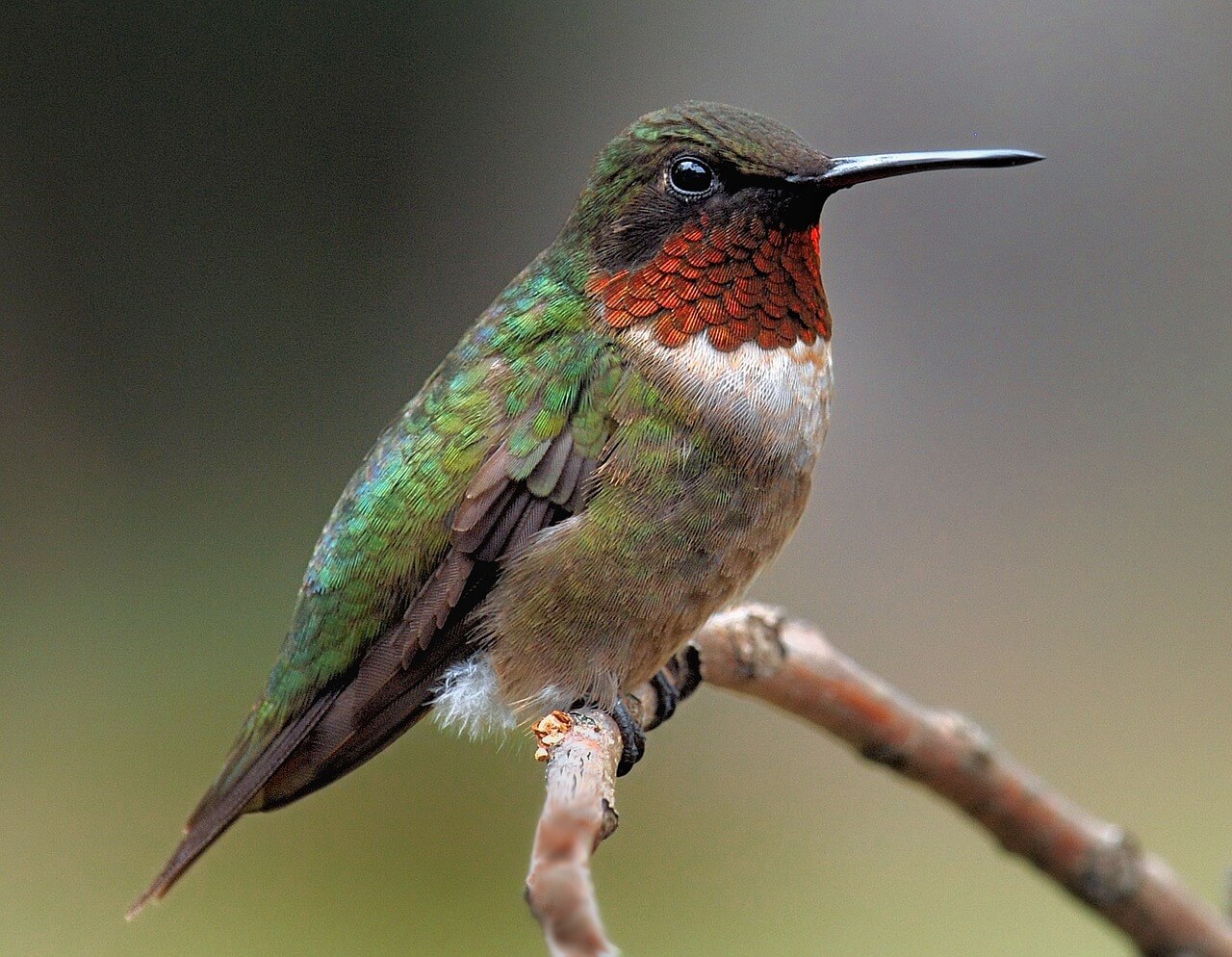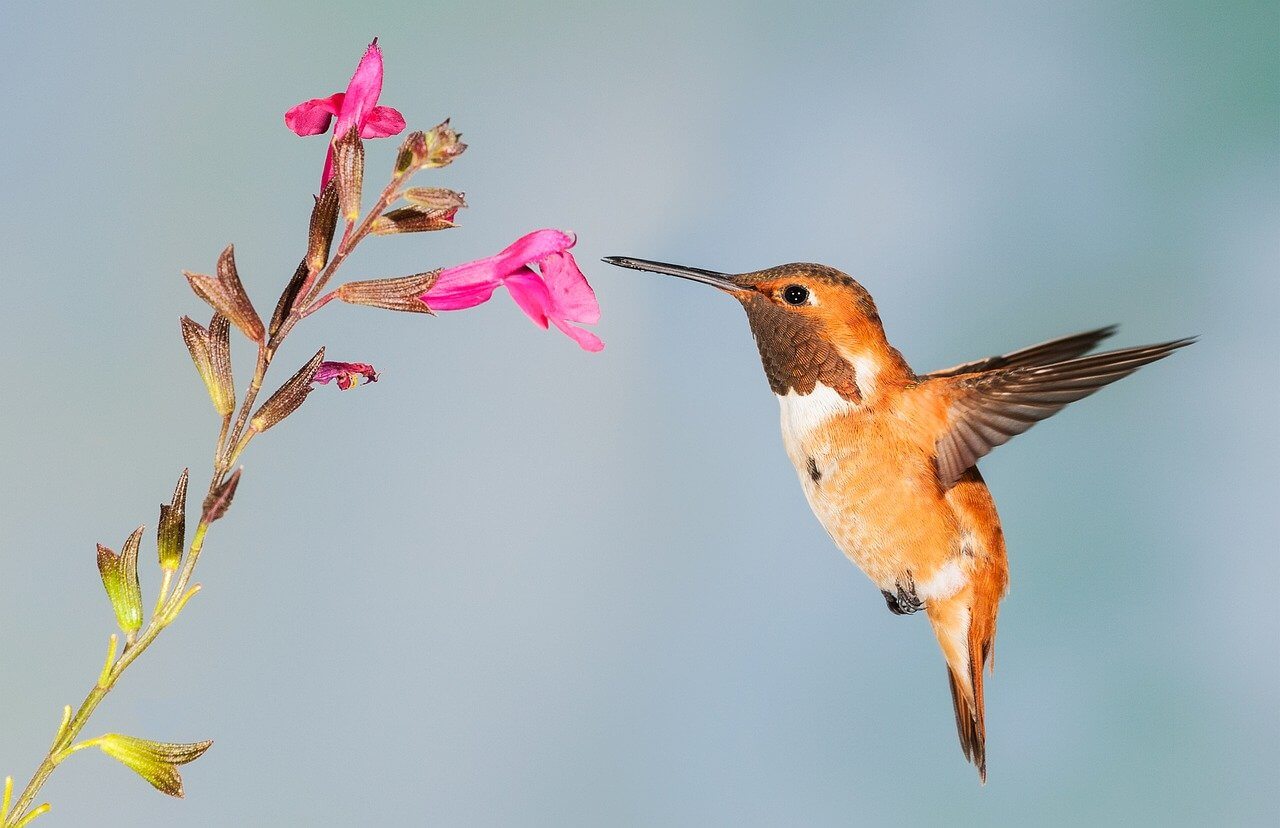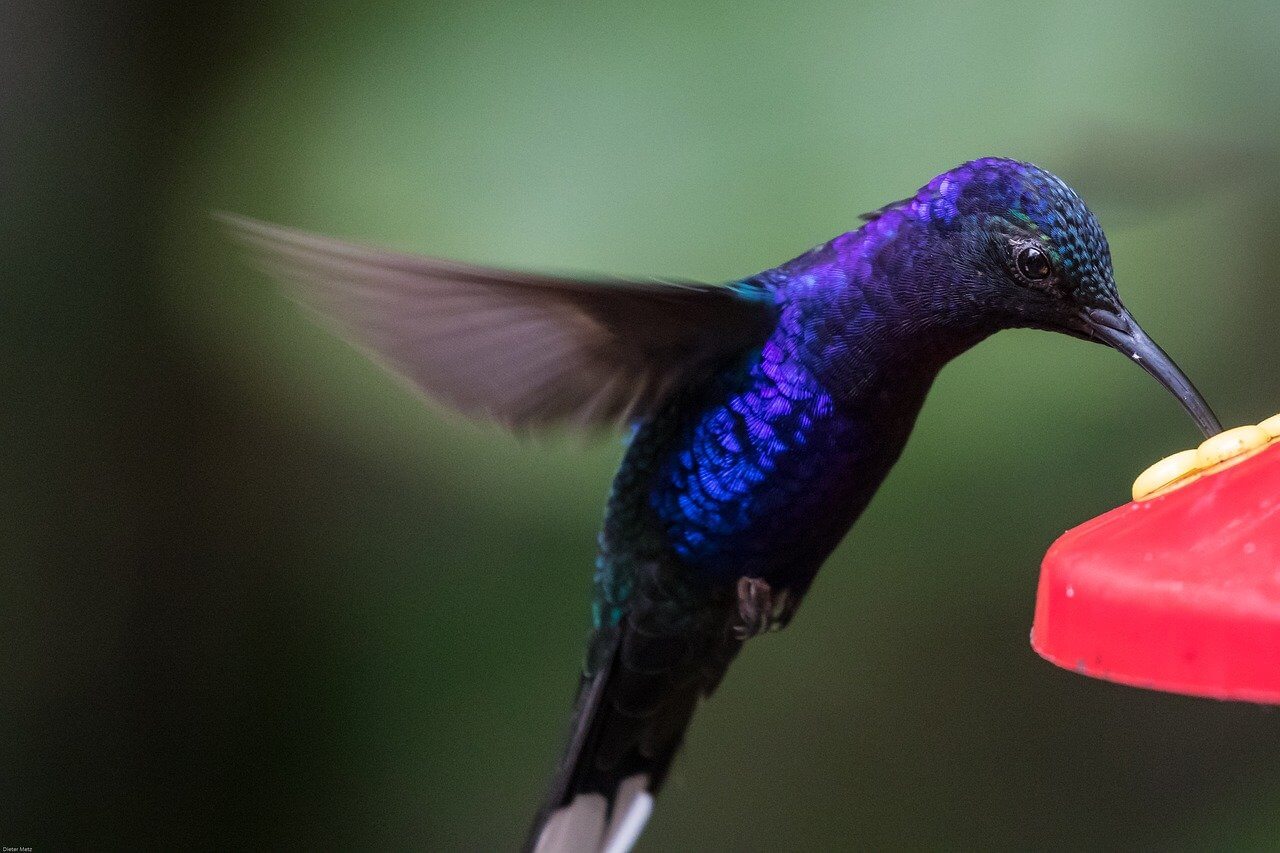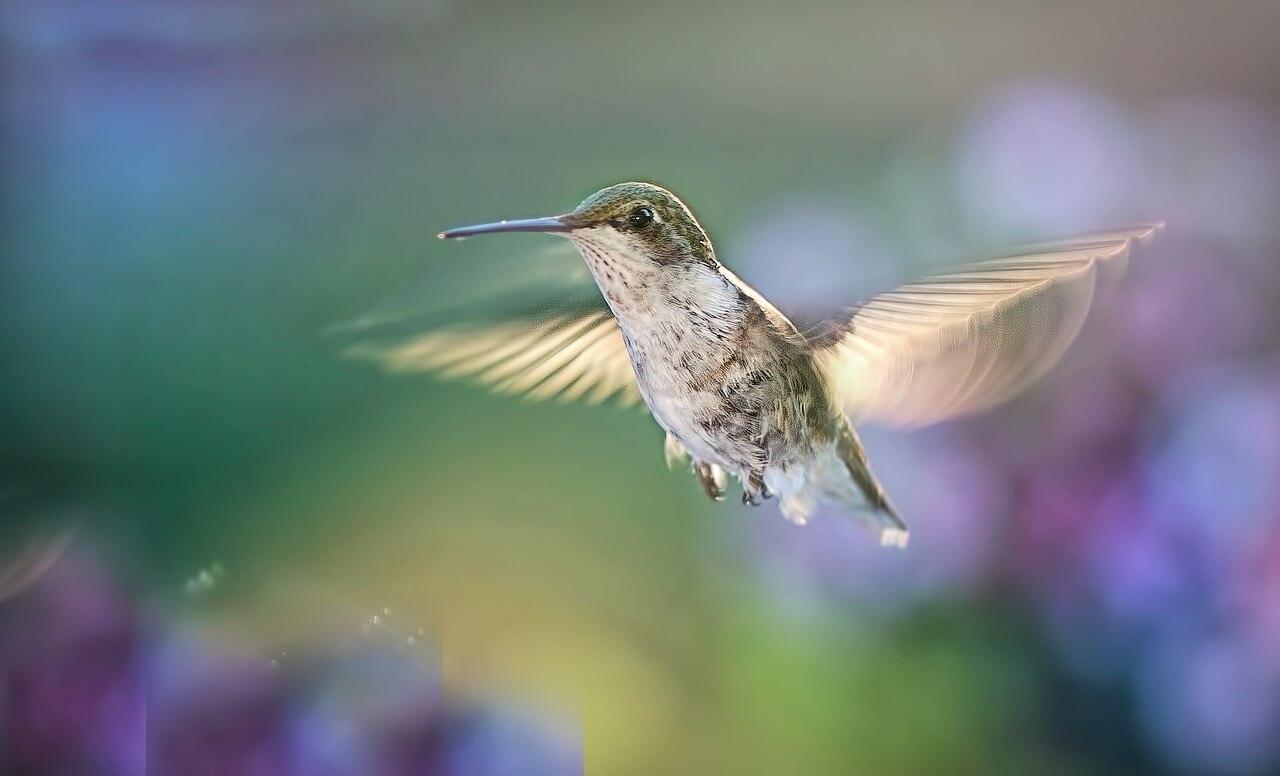Hummingbirds are beautiful little birds, but there are many creatures in the wild that value them for their taste more than their shiny feathers. Did you know that even some insects will attack and eat hummingbirds? In this article, we’ll answer the question, “what are hummingbirds’ predators?”
We’ll also discuss some related characteristics of hummingbirds, such as what they’re afraid of and how they avoid their predators.
What You'll Learn Today
What is a Hummingbird’s Biggest Predator?

If you have both cats and hummingbirds in your area, you may have seen a cat carrying a dead or injured hummingbird in its mouth. Perhaps your own cat even brought you a “present” after stalking a nearby hummingbird feeder.
The most common predators to hummingbirds are cats. Most neighborhoods have a fair share of both pet and feral cats, both of which may decide the local hummingbirds make excellent snacks.
Cats are quiet creatures skilled at sneaking up on their prey. Once they’ve positioned themselves in range of a hummingbird, they can pounce quickly, catching the hummingbird by surprise.
In some parts of the world, cats play a huge role in the endangerment of certain species of hummingbird. According to the Hummingbird Society, the Juan Hernandez firecrown hummingbird in Chile has been nearly driven to extinction due to the local population of cats.
Do Hummingbirds Have a Natural Enemy?

Considering the predatory nature of cats, it isn’t surprising that they will hunt and kill hummingbirds. But do hummingbirds have any other predators?
Hummingbirds have a wide variety of natural enemies. These enemies may vary depending on the region and climate.
While this isn’t an exhaustive list, some of the more common hummingbird predators include:
- Larger birds such as hawks, owls, crows, blue jays, and orioles. Some of these larger birds like to snack on adult hummingbirds, while others will attack the nest and steal hummingbird eggs or chicks.
- Snakes and lizards are common hummingbird predators in tropical regions as well as drier areas. They will sometimes catch and eat adult hummingbirds but pose the greatest threat to eggs and chicks.
- Frogs and even some fish may attack hummingbirds feeding on water lilies or other plants near ponds and streams. While frogs and fish don’t typically hunt hummingbirds, they can sometimes mistake them for insects and will attack and catch them before they know the difference.
- Spiders, particularly orb-weaving species, will eat hummingbirds like insects. Many hummingbirds will steal spider web threads for building their nests, and sometimes they will become entangled in the sticky web in the process.
- Insects of various species will prey on and kill hummingbirds. Bees or wasps may occasionally sting hummingbirds in a fight over nectar, while praying mantises have been observed stalking hummingbird feeders and feasting on hummingbirds.
Which begs an interesting question:
Do Dragonflies Kill Hummingbirds?
While it’s not entirely surprising that wasps and praying mantises attack hummingbirds, there have been numerous reports from bird watchers and homeowners claiming to see more surprising insects killing the little birds. One of the most surprising predators would seem to be the dragonfly.
Dragonflies don’t usually kill hummingbirds, but it has happened on rare occasions. Large dragonflies such as green darners and dragon hunters are the most likely culprits.
It’s unclear what causes dragonflies to attack hummingbirds, but it’s possible that they may fight over sources of nectar or territorial boundaries.
What Are Hummingbirds Afraid Of?

Considering they have so many predators, it would stand to reason that hummingbirds are afraid of a lot of things. In fact, hummingbirds are surprisingly tough and skilled at getting out of danger, so there are really only a few things that are known to frighten them.
Predators
This is an obvious one, but hummingbirds may exhibit fear toward some of their predators. They are very cautious when exploring new territories, scouting the area for potential threats and attempting to avoid becoming another creature’s next meal.
That said, if you’ve ever seen hummingbirds teasing your pet cat through the window, you probably know that hummingbirds have a pretty good idea when to be afraid of predators and when the predators pose no threat.
And if you’ve never seen a hummingbird teasing a cat, you’ll want to check out this video:
Loud noises
If you’re having trouble attracting hummingbirds to your feeder or flower garden, then you kids or your dog may be to blame.
Anything that causes a lot of noise, such as children playing, neighbors arguing, dogs barking, or loud music, can keep the hummingbirds away.
Loud noises are painful to hummingbirds’ sensitive ears and may be seen as a sign of predators in the area. Hummingbirds will avoid areas of loud noise even if it means they have to fly a more circuitous route around it.
Sudden movements
Just like loud noises, sudden movements can signal danger to hummingbirds. Many of their predators attack suddenly and quickly, so hummingbirds are well adapted to evade and escape these movements.
It’s interesting to note that hummingbirds generally aren’t afraid of humans. They may even get in your face and chirp loudly while you’re in the middle of changing their feeder, and they will often fly right up to the window and look inside.
That said, if you make any sudden movements, even small ones, you will likely send the little hummers quickly buzzing away.
Can Hummingbirds Be Aggressive?

Since hummingbirds are so small and have many predators, they have to have a way of protecting themselves and their nests. While it’s true that their agility and quickness gives them an edge, their audacity and determination is an often overlooked characteristic.
In truth, hummingbirds can be extremely aggressive. They will fight valiantly to protect their nest, pecking at assailants with their long beaks, attacking them with tiny talons, and beating them with their wings.
Male hummingbirds in particular are highly territorial. They will attack other hummingbirds who enter their territory – even if that means chasing them away from the feeder hanging in front of your window.
Hummingbirds may even fight to free themselves from a predator. If you’ve ever seen a hummingbird without a tail, this is a likely sign that it managed to escape from a cat.
While not all hummingbirds will be able to free themselves from a predator’s grasp, the tough little birds will not go down without a fight.
Conclusion
Hummingbirds have many predators, including cats, larger birds, snakes, and even some insects. Though they are attacked and eaten by a variety of creatures (and some of them even endangered), they are resourceful, aggressive creatures that often find ways to stay alive.
I have a bluebird house and a hummingbird feeder on poles outside my house. I placed cone shaped device on the bluebird pole to prevent, mainly snakes, from getting into the bluebird house. After reading this information should I do the same for the hummingbird feeder pole?
We have Green Hummingbirds that frequent our feeder and Trumpet vine. I love watching them. They are such gorgeous little birds and I love to watch them dart about.